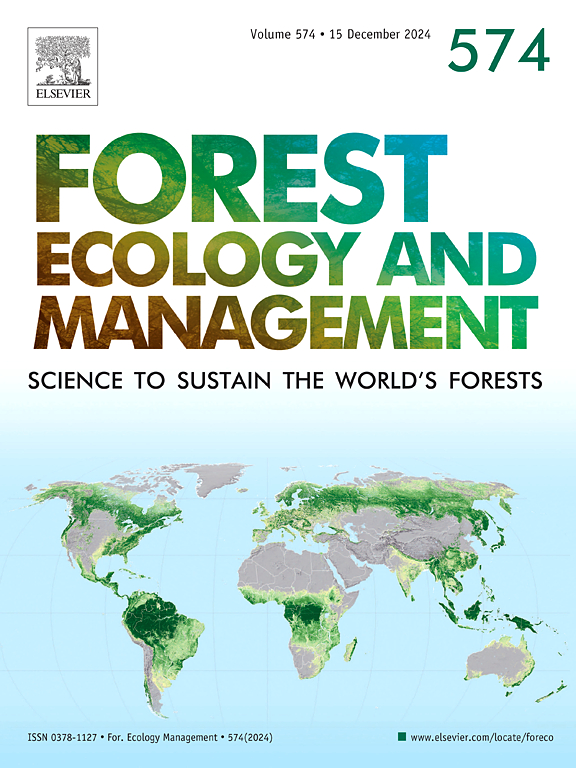Mycorrhizal association shapes responses of plant biomass but not soil carbon to nitrogen addition in global forests
IF 3.7
2区 农林科学
Q1 FORESTRY
引用次数: 0
Abstract
Mycorrhizal association regulates plant nutrient uptake and productivity, thereby shaping soil carbon storage capacity in terrestrial ecosystems. Ectomycorrhizas (EcM) and arbuscular mycorrhizas (AM) are two widespread mycorrhizal types, with distinct nutrient economy. However, how different mycorrhizal strategies affect responses of aboveground biomass (AGB) and soil organic carbon (SOC) to nitrogen (N) inputs in forests remains unclear. To address this issue, we compiled a global dataset of plant productivity and SOC responses to N addition, encompassing 262 forest sites dominated by trees associated with AM and EcM. In the AM forests with inorganic economy, exogenous N inputs substantially stimulated aboveground plant-derived biomass (+35.4 %), contributing to an accumulation of SOC (+5.5 %). This was partly linked to microbial growth and metabolite formation. In contrast, in the EcM forests with organic economy, fertilization resulted in SOC accrual (+6.0 %) via an increase in AGB (+13.3 %) and an inhibition of microbial decomposition (-11.4 %), with the latter effect strengthening at higher addition rates. Our findings demonstrate that N fertilization divergently influences plant biomass and soil carbon accumulation in forests with distinct mycorrhizal strategies, underscoring that integrating mycorrhizal-specific managements can enhance fertilization effectiveness and carbon sequestration of forest ecosystems.
求助全文
约1分钟内获得全文
求助全文
来源期刊

Forest Ecology and Management
农林科学-林学
CiteScore
7.50
自引率
10.80%
发文量
665
审稿时长
39 days
期刊介绍:
Forest Ecology and Management publishes scientific articles linking forest ecology with forest management, focusing on the application of biological, ecological and social knowledge to the management and conservation of plantations and natural forests. The scope of the journal includes all forest ecosystems of the world.
A peer-review process ensures the quality and international interest of the manuscripts accepted for publication. The journal encourages communication between scientists in disparate fields who share a common interest in ecology and forest management, bridging the gap between research workers and forest managers.
We encourage submission of papers that will have the strongest interest and value to the Journal''s international readership. Some key features of papers with strong interest include:
1. Clear connections between the ecology and management of forests;
2. Novel ideas or approaches to important challenges in forest ecology and management;
3. Studies that address a population of interest beyond the scale of single research sites, Three key points in the design of forest experiments, Forest Ecology and Management 255 (2008) 2022-2023);
4. Review Articles on timely, important topics. Authors are welcome to contact one of the editors to discuss the suitability of a potential review manuscript.
The Journal encourages proposals for special issues examining important areas of forest ecology and management. Potential guest editors should contact any of the Editors to begin discussions about topics, potential papers, and other details.
 求助内容:
求助内容: 应助结果提醒方式:
应助结果提醒方式:


